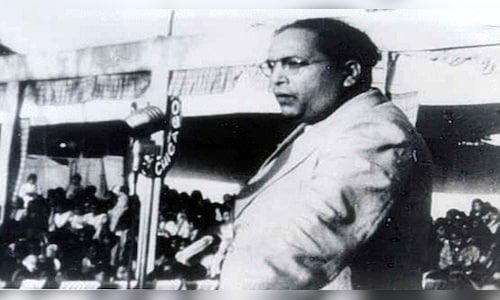
“On the 26th of January 1950, we are going to enter into a life of contradictions. In politics we will have equality and in social and economic life we will have inequality. In politics we will be recognising the principle of one man one vote and one vote one value. In our social and economic life, we shall, by reason of our social and economic structure, continue to deny the principle of one man one value. How long shall we continue to live this life of contradictions? How long shall we continue to deny equality in our social and economic life?”
Taxation in India should be viewed from this prism — seeking to achieve ‘equality in our social and economic life’. Adam Smith had in his Wealth of Nations laid the principles of taxation-fairness, certainty, convenience and efficiency. Or to put it differently the underlying principle is equity — driven by a focus on the ‘quality of revenue’. While direct taxes lend themselves easily to be progressive with the rate increasing as the taxable amount increases, the challenge lies in indirect taxes which make no distinction between the rich and the poor, and a major source of revenue in India. I must at the outset state that this piece going forward is heavily inspired by Prof. Karthik Muralidharan’s wonderful book ’Accelerating India’s Development -A State led Roadmap for Effective Governance’.
The quality of revenue collection has been defined as the cost of collecting revenue. It is a generally held axiom that the cost of collecting one rupee is more than a rupee. The administrative costs of tax collection, corruption, the time and effort spent in tax compliance and tax induced behavioural changes — either through legal avoidance or evasion, all add to costs. In India while the cost of tax collection is low (estimated to be around 0.44%), it is tax compliance and behavioural changes caused by taxation policy which cause great damage. These are costs which are not measured.
Economists Vijay Kelkar and Ajay Shah estimate this cost known as the Marginal Cost of Public Funds ( MCPF) in India to be around 3-in other words for every 1 rupee collected an additional wasteful cost of 2 is imposed on the economy. Public policy ultimately aims at bringing down the MCPF. A lower MCPF would indicate greater efficiency in tax collection , with rates and processes inspiring the tax payer to comply with the law.
It is in this background we should view the repeated attempts of the GST Council to merge/reduce the present five rates-the ideal impossible goal being a single unform rate. It should not be forgotten that the decision to have multiple rates was also driven by principles of equity. The GoM on rationalisation of rates would be giving its recommendations to the GST council scheduled to meet on December 21.
The 18% rate it is which is the major revenue giver for both the centre and the states-as much as 75% of the total GST revenue on an average comes from this segment of goods. The GoM will be acutely conscious that any tampering with this segment will have serious revenue repercussions. Merging the 12 % and 18 % slab to arrive at a much discussed revenue neutral rate of 15-16 % will be a difficult political call.
The revenue neutral rate of 15-16% was suggested when GST was introduced in 2017 and the weighted average was high; currently the weighted average of rates thanks to the constant reduction in rates/exemptions is about 11%. The GoM should not succumb, as an easy revenue increasing measure, to the temptation of increasing the number of items in the 28% slab-this slab was specifically an outlier for the ‘sin’ goods. We cannot suggest that more goods have started ‘sinning’ !
The focus should continue to be on scaling data analytics and forensics. The cloak of secrecy on GSTN data should be lifted so that industry and academics can participate in the analytical process. Privacy concerns should be respected-the analytical exercise can be focussed on sectors, geographical clusters, performance measurement. This will strengthen the hands of administrators , enforcement agencies and caution prospective tax evaders against attempting to evade the law. Audit should be strengthened with skill improvement being an ongoing exercise. We are for far too long avoiding taking a call on inclusion of petroleum products in the GST fold. Adjudications should be expedited-and arrears of revenue collected.
Prof. Muralidharan highlights the truism that the fiscal compact between the taxpayer and the government in India is weak — the taxpayers is not convinced that the taxes paid have resulted in any tangible improvement of services. This ultimately would come with better delivery of civic services and welfare activities. This is possible only with revenue in the hands of the Government for it to perform its functions. So while taxation is a necessary evil, if the funds are used effectively to reduce social and economic equality, we can address the concerns raised by Dr. Ambedkar 75 years back. If not it will continue to be a Utopian dream.
— The author, Najib Shah, is former Chairman, Central Board of Indirect Taxes & Customs. The views expressed are personal.
Read his previous articles here
(Edited by : Unnikrishnan)
First Published: Nov 28, 2024 3:08 PM IST



